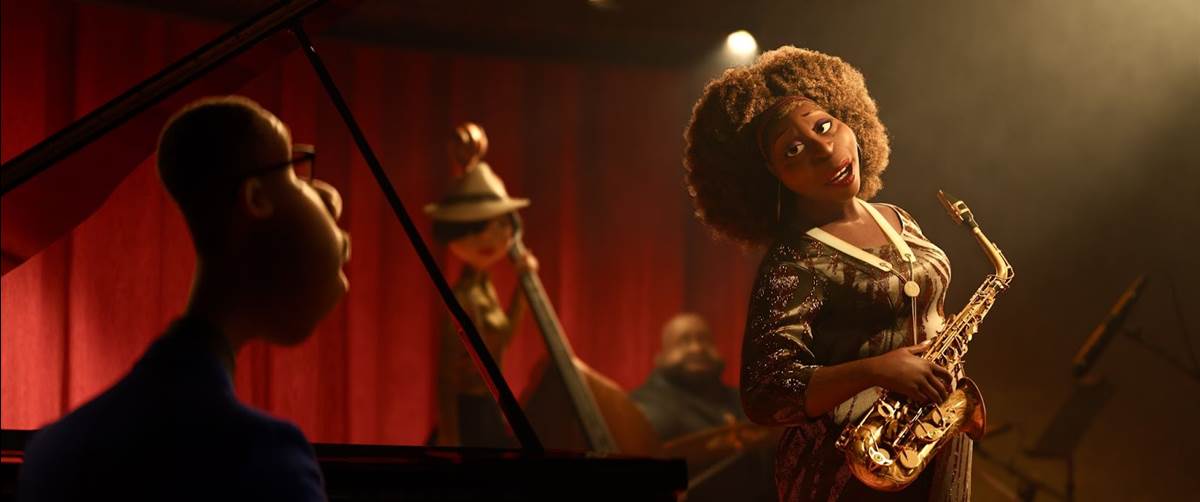Representatives from Pixar Animation Studios joined forces at SIGGRAPH for a presentation about Soul and the unique technical challenges it brought for the studio. Hosted by Britta Wilson, VP of Inclusion & Outreach, much of the presentation focused on the level of care that went into producing the film with Pixar’s first Black protagonist. I’ve already covered these conversations through multiple conversations with the filmmakers leading up to the film’s release (here and here), so this recap will focus more specifically on the technical aspects that were new reveals.
Director of Photography Ian Megibben talked about lighting for Pixar films, which has primarily been focused on diffuse techniques, creating a soft glow that the animation studio is synonymous with. However, this can change the intended color on darker skin tones. The team met with Bradford Young, cinematographer on films including Selma and Solo: A Star Wars Story, who taught them that Black skin is reflective and while lighter skin tones soak light in, darker skin tones bounce it back, which can lead to overexposure. The solution came by applying more specular, reflective qualities, which made it look more realistic while also fitting inside the stylized world.
Character Supervisor Junyi Ling talked about Pixar’s skin textures, which can look photorealistic if desired. For Soul, some of the skin modifications needed included adding longer subsurface scattering, which made shadows lighter. The technology has improved a lot on Soul and lighting tests were conducted to refine it so that it would look right in all environments. Other new developments included new grooming textures and new fabrics, including Dorohea’s gold and black dress that reflects the stage lights off it.
Production Manager Jaclyn Simon shared that the goal for the background characters was the populate Joe Gardner’s world with 80% people of color, 20% caucasian and with a 5/50 male to female ratio. When manually cast, even with that goal top of mind, they missed the mark. Thanks to a newly developed program, they were able to ensure that they stayed true to that goal.
Other discussions included Animator Sean Muriithi, who spoke about being part of Pixar’s internal Black Culture Trust, and Mara MacMahon, the Character Modeling Lead, who explained the degree of care that went into creating Black characters that were stylized, but didn’t unintentionally fit into harmful cartoon stereotypes of Black people from history.
Pixar’s Soul is available on home video formats and streaming on Disney+.

